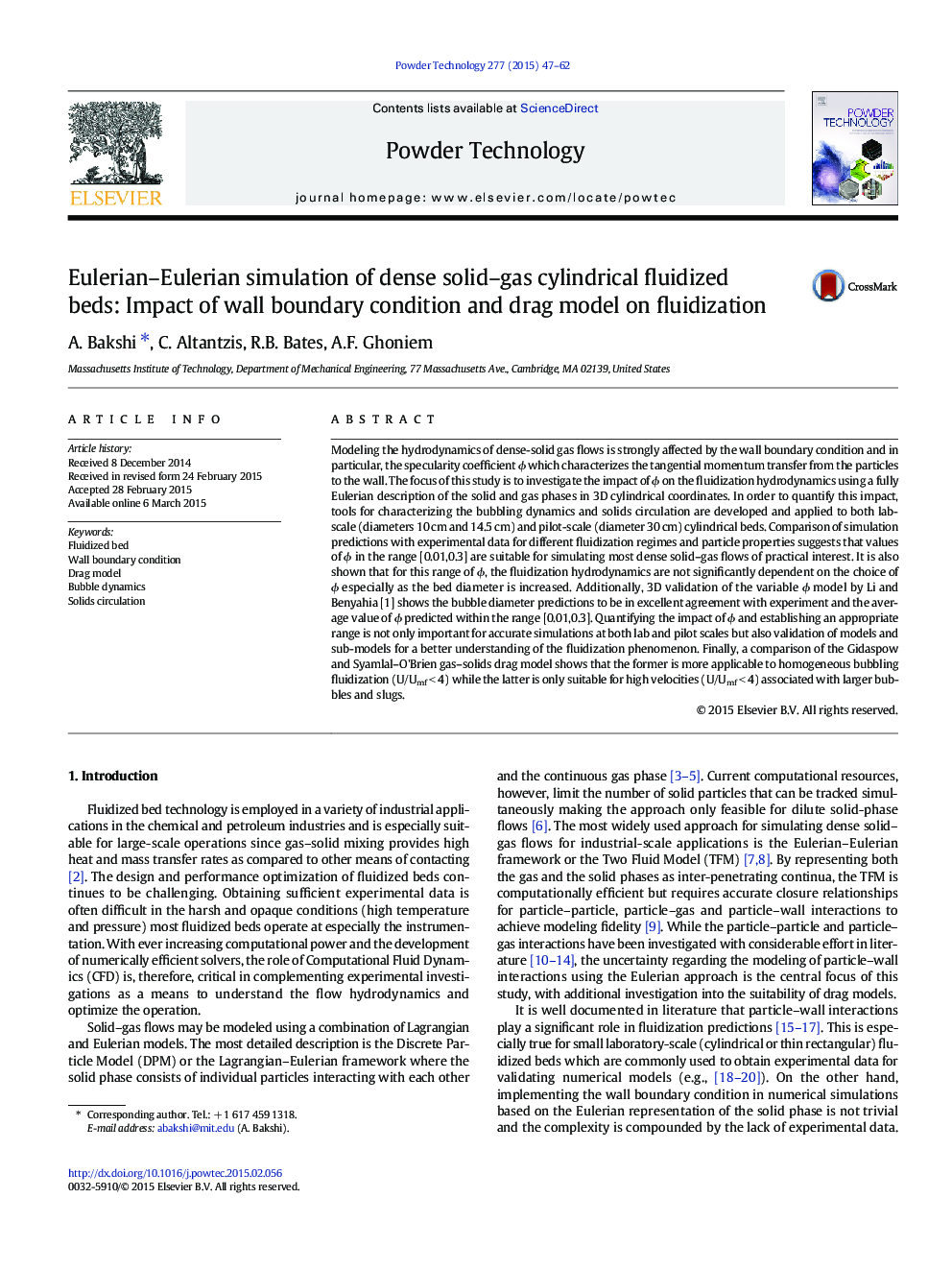| کد مقاله | کد نشریه | سال انتشار | مقاله انگلیسی | نسخه تمام متن |
|---|---|---|---|---|
| 235753 | 465646 | 2015 | 16 صفحه PDF | دانلود رایگان |

• Bubble statistics and solids circulation metrics developed for cylindrical beds
• Validation of specularity coefficient ϕ using several particles, fluidization regimes
• ϕ ϵ [0.01,0.3] appropriate for bubbling fluidization; verified with variable-ϕ model
• Hydrodynamics in pilot-scale beds (30 cm) less sensitive to wall boundary condition
• Analysis for suitability of different gas–solids drag models
Modeling the hydrodynamics of dense-solid gas flows is strongly affected by the wall boundary condition and in particular, the specularity coefficient ϕ which characterizes the tangential momentum transfer from the particles to the wall. The focus of this study is to investigate the impact of ϕ on the fluidization hydrodynamics using a fully Eulerian description of the solid and gas phases in 3D cylindrical coordinates. In order to quantify this impact, tools for characterizing the bubbling dynamics and solids circulation are developed and applied to both lab-scale (diameters 10 cm and 14.5 cm) and pilot-scale (diameter 30 cm) cylindrical beds. Comparison of simulation predictions with experimental data for different fluidization regimes and particle properties suggests that values of ϕ in the range [0.01,0.3] are suitable for simulating most dense solid–gas flows of practical interest. It is also shown that for this range of ϕ, the fluidization hydrodynamics are not significantly dependent on the choice of ϕ especially as the bed diameter is increased. Additionally, 3D validation of the variable ϕ model by Li and Benyahia [1] shows the bubble diameter predictions to be in excellent agreement with experiment and the average value of ϕ predicted within the range [0.01,0.3]. Quantifying the impact of ϕ and establishing an appropriate range is not only important for accurate simulations at both lab and pilot scales but also validation of models and sub-models for a better understanding of the fluidization phenomenon. Finally, a comparison of the Gidaspow and Syamlal–O'Brien gas–solids drag model shows that the former is more applicable to homogeneous bubbling fluidization (U/Umf < 4) while the latter is only suitable for high velocities (U/Umf < 4) associated with larger bubbles and slugs.
Figure optionsDownload as PowerPoint slide
Journal: Powder Technology - Volume 277, June 2015, Pages 47–62